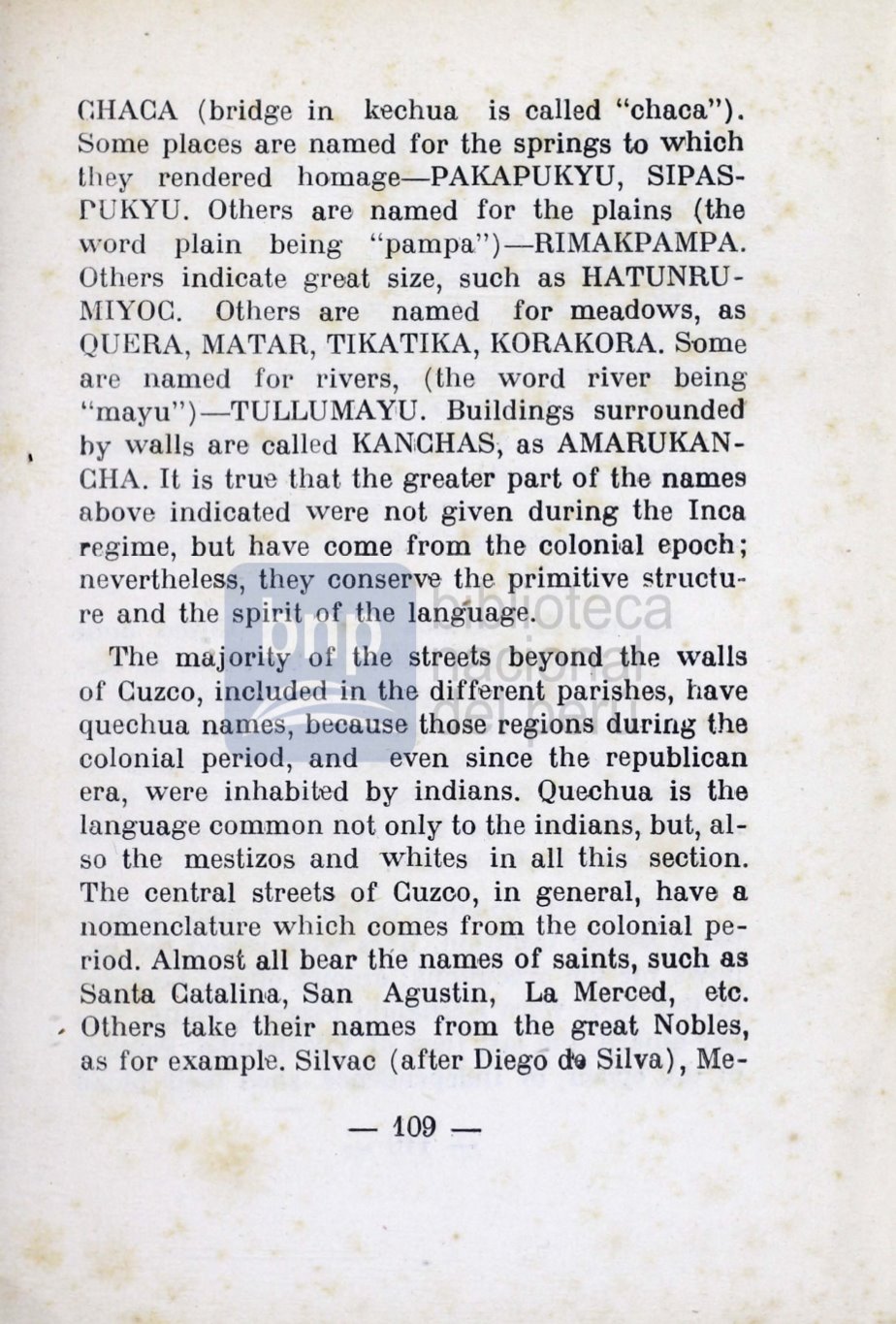

GHACA (bridge in kechua
is called "chaca").
Sorne places are named for the springs
to
which
th y
rendered homage-PAKAPUKYU, SIPAS–
PUKYU. Others are named for the plains
(the
vvord plain being "pampa")-RIMAKPAMPA.
Others indicate great size, such as HATUNRU-
f\1IYOC.
Others are
named
for meadows, as
QUERA, MATAR, TIKATIKA, KORAKORA. Sorne
are named for rivers,
(the word river being
"mayu" )-TULLUM·AY
1
U. Buildings surrounded
by walls are called KAN1CHAS; as AMARUKAN-
CHA. It is true that the greater part of the names
above indicated were not given during the Inca
regime, but have come from the coloni
1
al epoch;
nevertheless, they conserve the. primJtive structu–
re and the spºrit
.of
the a guage.
The ma:j ority of the streets
beyon~
he walls
of Cuzco, i cluded i
the different parishes, have
quechua names, because those regions during the
colonial period, and
even since the republican
era, were inhabited by indians. Quechua is the
language comimon not only to the indians, but, al–
so the mestizos and whites in all this section.
The central streets of Cuzoo, in general, have a
nomenclature which comes from the colonial pe–
riod. Almost
ali
bear tlíe names of saints, such as
Santa Catalina, San Agustín, La Merced,
etc.
, Others take their names from the great Nobles,
as for example. Silvac (after Diego
di
Silva),
Me-
-109
~
















